Why 343 Industries and Creative Assembly were perfect partners to resurrect Halo’s strategy spin-off

This interview was conducted by Xbox: The Official Magazine
When Halo Wars 2 launched in February 2017, it heralded the eight-year anniversary of its predecessor. Much has changed in the intervening years: original developer Ensemble has collapsed, while custody of the Halo franchise has been passed from Bungie to 343 Industries. With the sequel now upon us, we spoke to 343 boss Bonnie Ross and Creative Assembly executive producer David Nicholson to find out why it’s the ideal time to revive the series, and how the partnership hopes to introduce a new audience to the pleasures of the real-time strategy genre.
OXM: It’s been a long time since the first game launched. What do you think the series needed most to be brought up to date?
Bonnie Ross: It has to be accessible. It has to feel like a mash-up between action and strategy. I think there has to be more action [for console players] and then for PC [players] there has to be more depth. For us, finding the right partner in Creative Assembly was key – to find the team that could actually pull that all together. Lastly, I think there had to be something extra that was pushing the series forward in a different way.
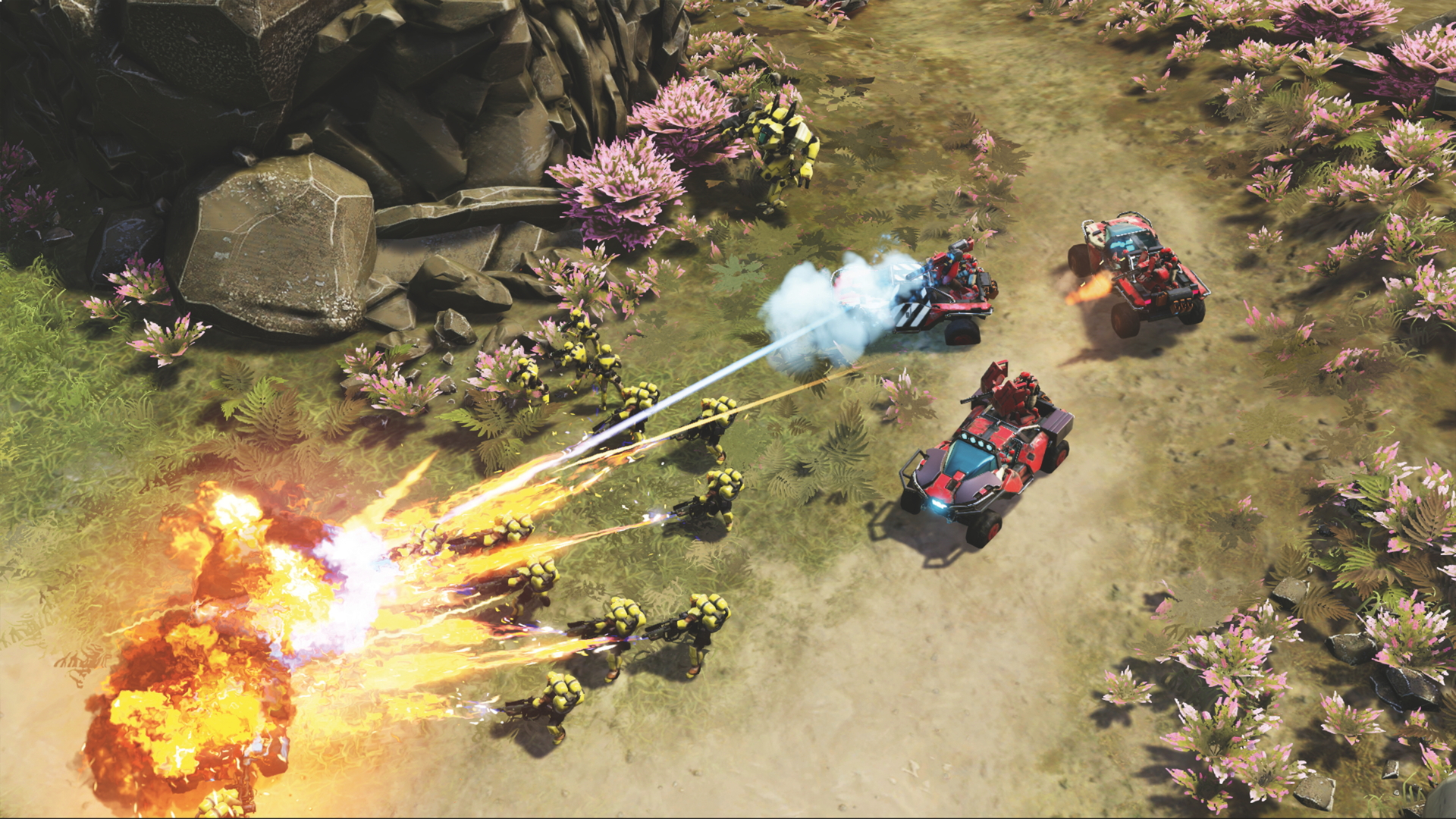
OXM: What were the logistics of getting Creative Assembly involved? Obviously the studio is owned by Sega, so what barriers did you have to overcome to make that happen?
BR: There weren’t really a lot. Sega’s a really great partner – [it] pretty much let Creative Assembly do what it’s passionate about. When we first approached [Creative Assembly], it was our top choice of developer [thanks to] everything it’s done with Total War. Then it was about finding out if it had an interest in Halo, and then discussing if we could find that right balance between having some more depth while being accessible. [The studio] was very passionate, and it’s been a great partnership right from the beginning. There have been no barriers there.
OPM: What percentage of 343 personnel were working on Halo Wars 2 relative to the mainline Halo games?
Weekly digests, tales from the communities you love, and more
BR: It’s much smaller. The FPS [series] is almost a fully internal team, and we have some partnerships outside that. Whereas the RTS is more of a smaller team partnering with the larger team which is Creative Assembly. What we’re focused on is story, bringing Blur Studio in [for the cinematics] and telling the story that we want. It’s about making it feel more like Halo, with the music for example, and our designers working together on what that Halo feel is. But the team at Creative Assembly [are] the experts on the RTS, and the heavy lifting is being done by them. The control scheme feels very intuitive, like it’s been tailored for PC and console.
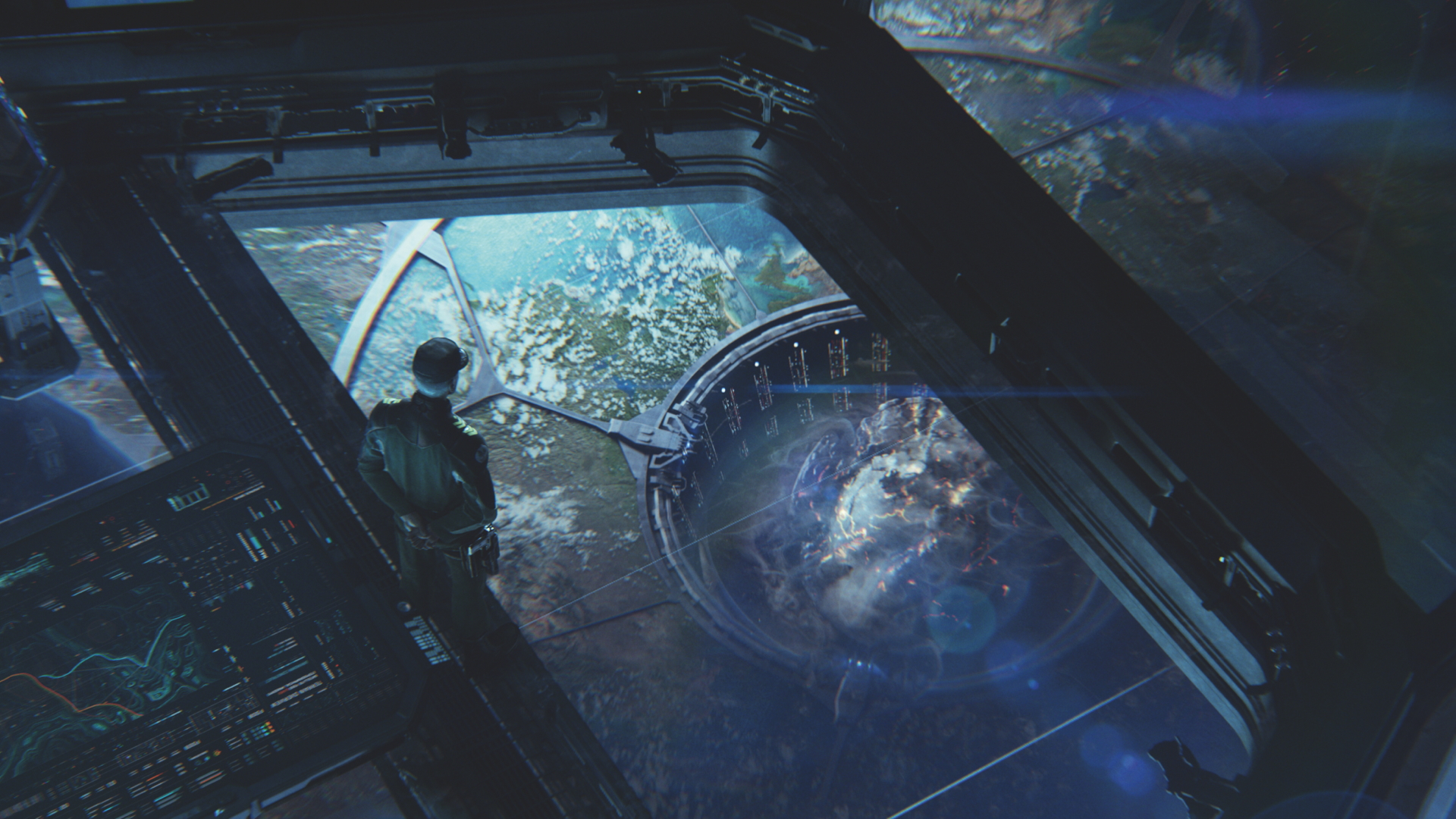
OXM: How much of that did you carry across from the original Halo Wars?
David Nicholson: Ensemble built a fantastic control scheme. It was really difficult to get RTS controls onto a console, so they did some amazing things – like having prescribed base slots, building slots and having a radial menu. We tried to think, ‘Okay, what could we do differently to a radial [menu]?’ but we eventually [realised] we couldn’t do anything better than the radial. It really works. But we’ve added control groups [and] we’ve made it easier to quick-jump around the map. So there’s a few things we’ve added in. And from the beta we had in June, we had a lot of really good, constructive feedback on some of the controls, so we’ve tweaked a few things so that you can get to the action more quickly.
BR: We were really deliberate in putting the beta out early, similar to what we did with Halo 5, where we put it out almost a year in advance, such that we had the time to really implement the feedback versus a beta that’s much closer to the game’s release. We had feedback from Total War players, from RTS players, from Halo Wars players, from Halo [fans]. It was really useful to be able to get all that feedback.
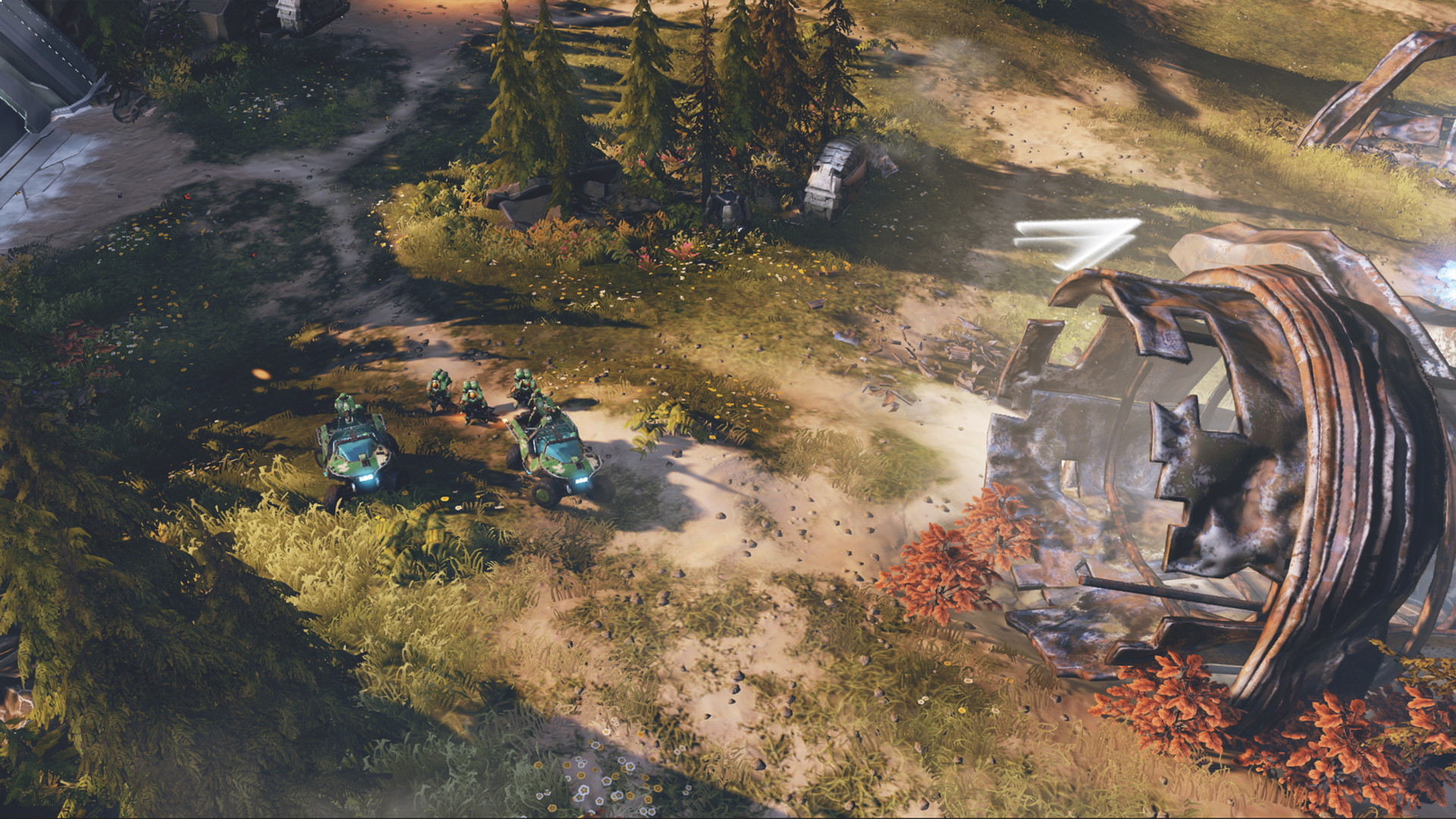
OXM: It’s clear you aren’t afraid to bring in some of the more complex elements of popular RTS games...
DN: Well, the original Halo Wars is, what, eight years old? So we needed to bring it up to date, but we also needed to balance that with the fact that we really want more people to enjoy it. We love making RTS games and we love playing them, but we can understand how they can be just a little bit daunting. People can be apprehensive of playing them because there are lots of plates to spin. So what we try to do is use the audio, use the UI. You’ll see on the radial [menu] when you’re building units, there are little traffic lights which show you what they’re [strong] and weak against, to try to get people who are new to the genre to understand those counters.
But we do have what we call hard and soft counters in there. So these units are really strong against this enemy, and these ones will beat these, but it’s not their primary purpose. The Hunters, for example, on the Banished [side] are a hard counter to the tanks, so you’ll be [advised] to take the Hunters out because you don’t want them to be coming up against your tanks. For us, the Halo fans who’ve played the FPSes who might come in and say, ‘Oh, I really want to play an RTS but they’re a bit daunting to get into’? They’re the litmus test.
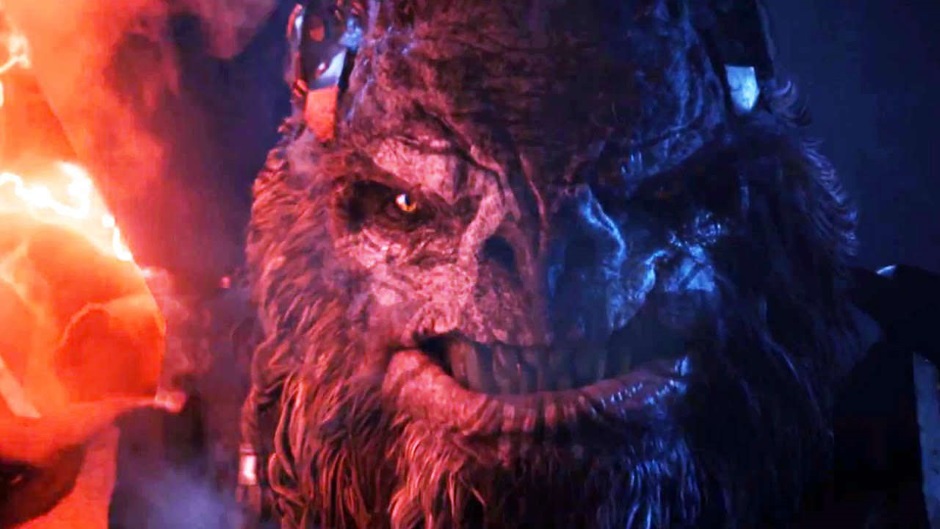
OXM: So your main focus is making that rock-paper-scissors dynamic easier?
DN: Exactly. At first, some people will be thinking, ‘What do I need to bring onto the field?’ And that’s one of those things where over time it gets more familiar. It’s like driving a car: first of all, you’re really worried about the clutch, and a few months into driving, the clutch just feels natural. One of the great things that keeps you engaged in an RTS is having multiple plates to spin, so to help with that we’re using dynamic audio. We’ll use that to [communicate] that there’s something going on over here, and you need to pay attention to it. For example, when the units say, “Yeah, we’ll go and attack,” you think, ‘Okay, that sounds fairly normal,’ but when they say, “You really want me to go and attack that?” it [makes you think], ‘Do I really want to go and attack that?’ Then you can go and have a look, and realise that maybe you don’t want to send that guy up against three Kodiaks.
OXM: That’s a much more helpful way to give players information than forcing them to rely on generic barks.
DN: Exactly. We’re definitely trying to push that. We wanted to try and communicate more, so we sat down, and we watched lots and lots of people play the game: not only this game during very early development, but also the first Halo Wars. So our very seasoned RTS designers have been watching new people play, and learning that they’re maybe not seeing what they should be doing. So we’d ask ourselves, ‘Why are players not [understanding]? What information are they lacking, and how can we give them that through UI, through audio, through visuals and VFX?’ For all that you’re trying to make it more accessible, you’ve also added new elements to make it a deeper strategy experience.
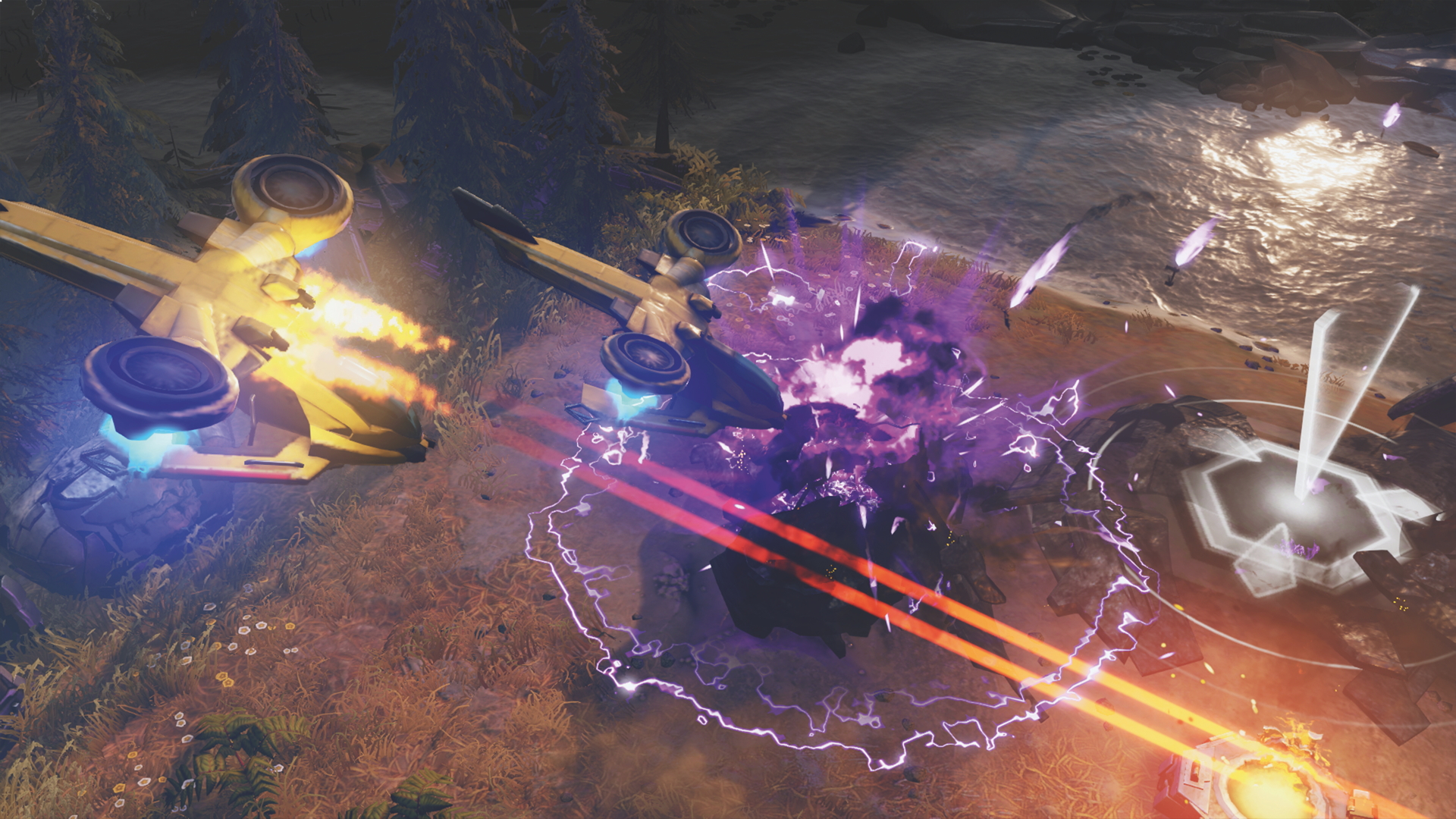
OXM: Can you tell us about some of those?
DN: Well, each unit has got something we call the Y ability, so if you press the Y button it’ll instigate its own special ability. The Warthog has a ram ability, the Vulture can fire a nuke, that sort of thing. And we’ve introduced some new units, like the Kodiak and the Blisterback, [which] are new deployable units. With the Kodiaks, they drive in and then their legs come out and they deploy as their special ability. They’ll do okay damage as they’re moving around, but when they deploy their range extends and they can use their large artillery to fire.
OXM: How far into the game will it be before players have the full repertoire of capabilities?
DN: We gate some of the leader powers in the campaign. And while we tend not to gate the buildings, further into the campaign you will be gathering more resources so you can upgrade your base and then build the higher tier units. We want each mission to introduce at least one new unit and mechanic, so that during each mission you’re learning something new and expanding upon what you’ve learned before. We want you to have a fun and enjoyable campaign but it’s also about tutorialising some of the stuff that you then want to try and use in multiplayer as well.

OXM: Can you tell us more about the advanced versions of units?
DN: Yes. You have Jackrabbits straight away which are your fast Scout unit, and then you can upgrade those to Gunrabbits. Initially, you can build those quickly and they’ll go out – they’re quite weak but they’re very quick and can give you [increased] map visibility. Later, if you’re gathering enough resources and money to spend on them, they can be Gunrabbits – and they can defend themselves. It’s really interesting on some of the multiplayer modes, where you have contested points – if you’re at a point and you’re not being attacked then you can own that point and gather the score from it. Now if I send a Jackrabbit out, I’m just looking at you and I’m not attacking. But if I send a Gunrabbit out to you, then I’m attacking you and as soon as you’re in conflict you’re no longer gaining a score from owning that point.
The beauty of RTS is that you’ve got all these different choices to make. When you’re a hardcore StarCraft player it’s all about the APM (actions per minute) and getting those exactly right, in the right order. If you want to play Halo Wars 2 like that, you can. But we’re layering on more and more [mechanics]. When we watch players, there are so many light bulb moments, where they realise, ‘Oh, I can do this,’ or, ‘Ooh, I can do that,’ with all these different combinations of units.
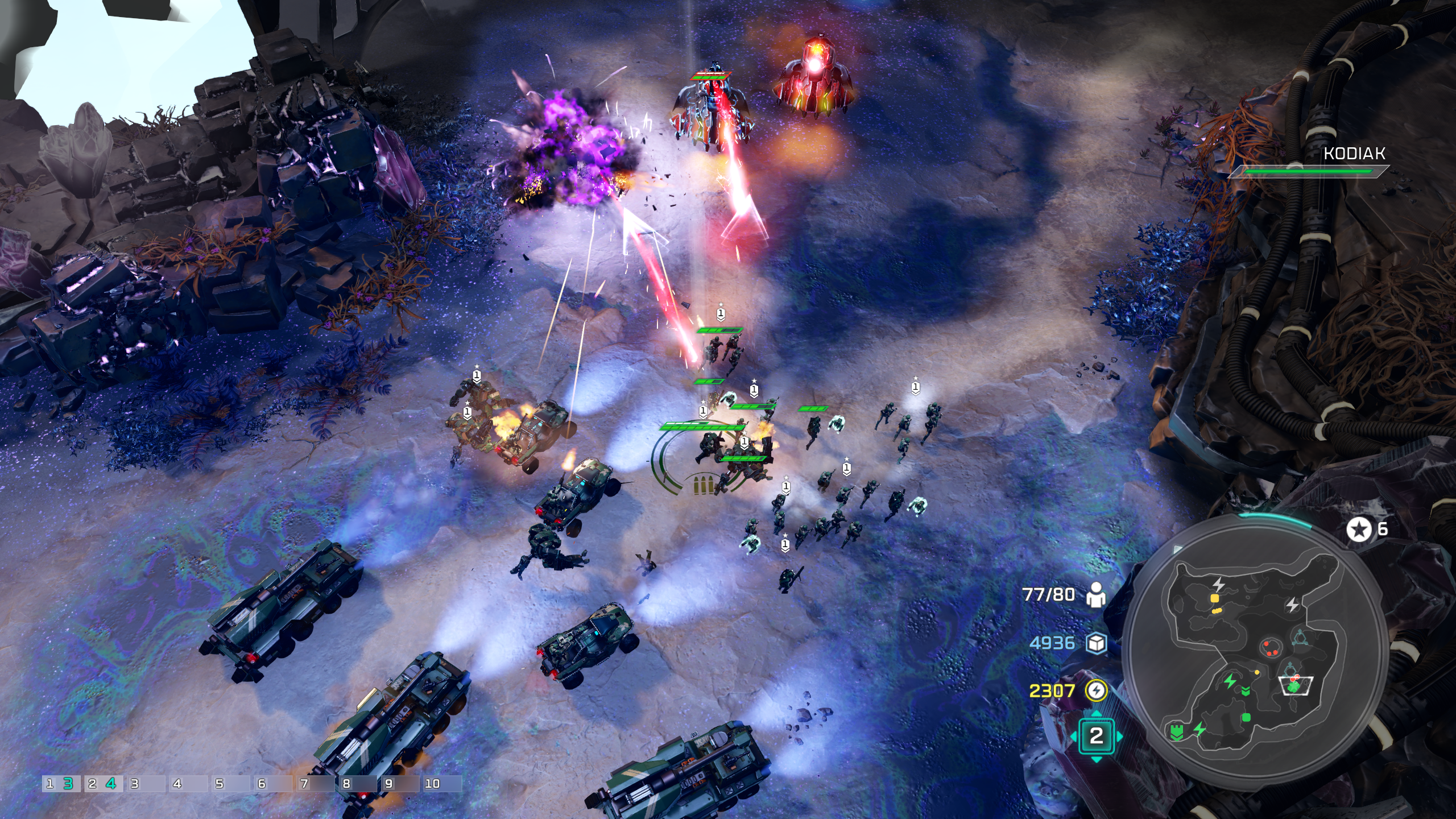
OXM: It seems like competitive gaming is a big focus for 343. Is cultivating a competitive scene for Halo Wars important to you?
BR: It is, but I think it has to naturally happen. The way I look at it – we’ve got something that players want to play and compete in and have since Halo 2 in that eSports type of scene. With our RTS, I hope that players [reach] that stage – whether it’s Blitz mode or our PVP, but it does have to be grown from the ground up. Players have to feel this is a competitive mode that they want to move to eSports. I don’t look at us moving straight to the pro leagues; I think it has to evolve naturally. Do we want it to? Yeah, but it’s also got to be something that players want.

OXM: One key difference from the first Halo Wars is that you’re clearly not afraid to let this game push the lore forward. Does Halo Wars 2 have a longer leash to contribute new ideas to the Halo mythology?
BR: Yeah, I think it’s really important. I look at the Halo universe as our canvas on which to tell all these stories, and I do think that every game needs to bring something new in both gameplay innovation and story, and in its cast of characters – such that we have a repository of people to tell stories about. I mean, we had a bit of a history with Halo: CE, Halo 2, Halo 3 and Reach of killing off all the characters! Which naturally leaves you with a really empty universe. So we really pushed to make sure we populate that universe with interesting characters so that we can tell different stories.
For this game, we deliberately put poor Captain Cutter to sleep for 28 years so that we could bring him into the present, and we did this for a couple of reasons. One, for the obvious fact that if someone’s playing one of our games it’s not like they have to time travel to think about what’s going on and what makes sense. It enables us to all be in the present day. And two, we thought it was really interesting to look at that classic, older style Halo formula and compare it with where things are today.
When you think about the Brutes and where we left them in the FPS series to where [Halo Wars 2’s new Brute warlord] Atriox is today? I think it’s going to be interesting for fans.
This article originally appeared in Xbox: The Official Magazine. For more great Xbox coverage, you can subscribe here.
Samuel is now a PR Manager at Frontier Development, but was once a staffer at Future PLC. He was last the Entertainment Editor at TechRadar, but before that he was the UK Editor at PC Gamer. He has also written for GamesRadar in his time. He is also the co-host of the Backpage podcast.


